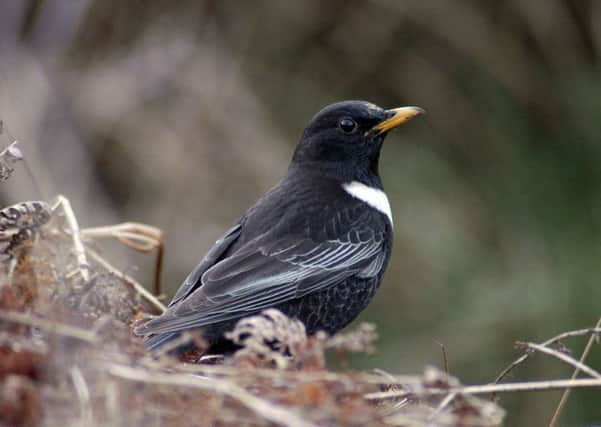First seasonal sightings of returning ring ouzels


But both are tough and resilient birds and would have been well able to cope until the weather turned milder again.
Ring ouzels, pictured, in particular are used to some snow and ice in their winter quarters in the Moroccan and Tunisian Atlas mountains and it is perhaps surprising that more don’t follow the example of European blackcaps and spend the winter here instead. There have been a number reported in South Wales this winter while in Yorkshire a male, first reported in a sheep pasture next to the church at Brompton-by-Sawdon, near Scarborough, on January 14, was still present this week.
Advertisement
Hide AdAdvertisement
Hide AdAnother male spent most of January in a pony paddock at Sammy’s Point, Spurn while there was also a report of one at Sandsend near Whitby on January 22.
In North Africa, the ring ouzels survive mainly on juniper berries and in this country there would be plenty of berries available to them, along with the flocks of fieldfares and redwings that come here from Scandinavia.
Male ring ouzels are the first to leave North Africa in late February and are very distinctive with black plumage contrasting with a pale wing panel and a striking white breast band.
They start singing to establish territories from a tree or boulder until the females, brown and with a paler creamy breast band, arrive back.
Advertisement
Hide AdAdvertisement
Hide AdThey nest on or low to the ground in sheltered gullies and there are populations in the Yorkshire Dales, North York Moors and Peak District national parks.
The ring ouzel is associated with this country’s wildest and most remote places which is why another name for it is the mountain blackbird.
Sadly, it has declined dramatically in the UK over the past 30 years making it a Red Listed species of conservation concern.
The main reason seems to be low survival rates among the first year young perhaps due to a shortage of food for them.
Advertisement
Hide AdAdvertisement
Hide AdTo raise young, ideally two broods, successfully the ring ouzels need good foraging areas of short grass containing plenty of invertebrates to feed them while they also need berry bearing shrubs and scattered trees in autumn to help build up reserve for their long flights south.
More ring ouzels and wheatears have been seen on passage at lowland sites while other spring migrants included ospreys, garganey ducks and singing willow warblers.
A drake ring-necked duck was at the Far Ings reserve, North Lincolnshire and a green-winged teal again at Kilnsea Wetlands.
Black redstarts were seen at many places along the Yorkshire coast on their way back to breeding sites while a great grey shrike was first seen at the Bempton Cliffs reserve on Tuesday.